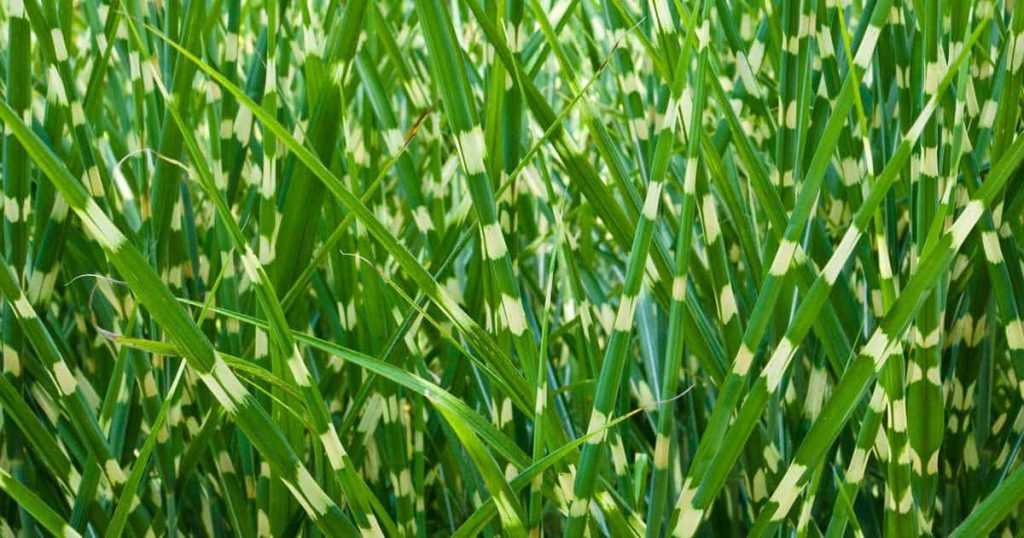Maiden Grass: How To Care For And Use
Maiden grass (Miscanthus sinensis gracillimus) is a rich, tall, full-bodied herbaceous perennial and hardy ornamental grass that is popular in unexpected places. Maiden grass is a warmer-weather perennial grass that can be found in a variety of natural-looking landscapes and gardens. Because of its low maintenance requirements, it is commonly planted alongside roadways and highway exits. Read on to learn how to use and care for this tall arching plant in your home.
Ornamental Grass A Gardner’s Friend
The reason this grass is so popular along roadways across north america demonstrates some of its selling features for at-home gardeners, professional landscape architects, and landscapers. Highway exits and roads have some big issues:
- Rocks
- Steep inclines
- Inaccessibility for industrial lawnmowers
- Ditches exposed to sitting water
- The cost to upkeep a swath of grass along the road
The costs to constantly replace neglected plants is a scourge on municipal and government budgets. It’s also creates an eyesore for passersby and residents. Maiden grass looks good all year, standing up to full sun or partial shade, likes water, and requires no mowing.
What Does Maiden Grass Want To Thrive
The easy care ornamental maiden grass:
- Thrives in many soil types – clay, sandy, or normal soils equally but appreciates a well-drained soil
- Takes to any pH, whether it is acidic, neutral or alkaline
It handles moisture very well, though take care to water under foliage at the root to prevent leaf rust, a fungus that appears when the leaves take on water.
To be clear, the plant likes water, and thrives in the Southeast, United States, for one, because of the constant rainfall they receive. Though, the grass is an apt resident of the USDA zones 5 through 9.
Warm-Season Grasses And Insect Repellent Bonuses
It turns out that maiden grass maintains a bug-free existence, even sitting waterside naturally. It will not require any Herculean (or chemical) efforts to repel insects, deer, or even rabbits.
Practical At-Home Uses For Maiden Grass
Miscanthus sinensis offers all of these benefits plus a soft and sweeping visual appeal as a standout statement among flowers and manicured low-lying grasses in hardscaped areas. It makes for an unassuming, even friendlier privacy hedge compared to prickly, pine-needle-festering evergreens that require constant trimming and needle cleanup.
Its popularity as a waterside grass is perennial, and there are so many varieties of this grass home gardeners may choose the height, width of grass blade, and coloration.
Zebra Grass Or Chinese Silver Grass

In particular, the grass is beautiful, tall, and plumes in summer to late fall. The many varieties of the species determine the color of the plumes and whether they have the distinctive lines of variegated leaves or employ uniform coloration throughout its leaves. Zebra grass (Miscanthus Sinensis zebrinus) a popular variety of variegated ornamental grass originating in Japan, but dots many landscapes across north america and throughout the world.
The entire Miscanthus Sinensis family are native in China, Korea, and Japan. The Zebra Grass also know as Chinese silver grass is a herbaceous perennial, like the rest of the Miscanthus family, which die off for a bit in winter and regrow starting every spring. It does provide a fabulous visual display like fireworks in slow motion throughout the year. Spring marks it green zebra striped leafy growth period, transitioning to a rusty color in summer.
Then it takes on a golden hue in fall and going dormant into a signature textured feel during the winter season. Many like to pair it with the larger-than-life wide-leaf grass that stands over entire gardens, the Pennisetum Alopecuroides pampas grass. Be sure to have well-draining soil wherever these grasses are to take root.
Trimming Ornamental Grasses
Fortunately, maiden grass sits pretty most of the year without needing much in the way of care. While the grass may brown after late fall, it is not usually until early winter that it sheds and requires its annual trimming. Tie back the grass once it has browned and dried, and lob off to the 10-inch marker. Be sure to wear long sleeves and gloves to protect your skin from the sharp edges of the grass.
Growing Maiden Grass
In late winter or early spring, the grass may show signs of dying out in the central area of the plant. It signals that it is the right time to take a sampling of a mature plant to transplant.
Cut a few individual plants from the one main root of grasses to plant separately. Usually, this will be necessary every few years.
Enjoy the tall graceful presence of maiden grass, which grows anywhere from 6 feet to 10 feet. Smile quietly to yourself knowing you have the easiest and possibly most beautiful plant in your garden.







Leave a Reply
You must be logged in to post a comment.